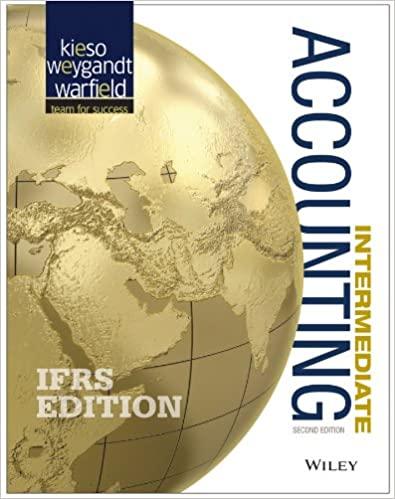Question
1. While preparing the cash flow statement of a company, its accountant observed an increase of $100,000 in the value of cash and cash equivalents
1. While preparing the cash flow statement of a company, its accountant observed an increase of $100,000 in the value of cash and cash equivalents of the company. Which of the following is true of the journal entry the accountant is likely to prepare to record the increase of cash and cash equivalents for the year assuming that the company was likely to pay a cash dividend of $15,000 to its shareholders the following year?
- Cash and cash equivalents would be debited by $15,000, while cash dividends would be credited by $15,000.
- Net increase in cash and cash equivalents would be debited by $15,000, while cash dividends would be credited by $15,000.
- Cash and cash dividends would be debited by $95,000 and $15,000, respectively, while the net increase in cash and cash equivalents would be debited by $110,000.
- Cash would be debited by $95,000, while the net increase in cash and cash equivalents would be debited by $95,000.
2. On January 1, 20X1, Sage Consulting had a cash balance of $20,000. On December 31, 20X1, its cash balance was $35,000. Its accounts receivable increased from $10,000 to $16,000. Which of the following is true treatment of the increase in the value of accounts receivable while preparing the statement of cash flows using a worksheet approach?
- The increase in the value of accounts receivable of $6,000 must be debited to accounts receivable and must be deducted in the operating section of the statement of cash flows.
- The increase in the value of accounts receivable of $6,000 must be debited to accounts receivable and must be added in the operating section of the statement of cash flows.
- The increase in the value of accounts receivable of $6,000 must be debited to accounts receivable and must be deducted in the investing section of the statement of cash flows.
- The increase in the value of accounts receivable of $6,000 must be debited to accounts receivable and must be added in the investing section of the statement of cash flows.
3. Assume that accounts payable of an entity increased by $15,000 in 20X1. Which of the following statements is true of accounts payable while preparing a statement of cash flows?
- The amount of increase in accounts payable of $15,000 must be deducted from the closing cash balance.
- The amount of increase in accounts payable of $15,000 must be deducted from the net income.
- The amount of increase in accounts payable of $15,000 must be added back to the net income.
- The amount of increase in accounts payable of $15,000 must be added to closing cash balance.
4. On January 1, 20X1, a company had a dividends payable balance of $30,000. On December 31, 20X1, the credit balance of the dividends payable account was $22,000. Which of the following is true of the treatment of dividends payable in the statement of cash flows?
- The value of dividends payable has increased by $8,000, indicating an inflow impacting the financing section of the cash flow statement.
- The value of dividends payable has reduced by $8,000, indicating an inflow impacting the financing section of the cash flow statement.
- The value of dividends payable has reduced by $8,000, indicating an inflow impacting the operating section of the cash flow statement.
- The value of dividends payable has reduced by $8,000, indicating an outflow impacting the financing section of the cash flow statement.
5. While preparing the worksheet for the statement of cash flows, a company recorded a debit of $20,000 to accounts payable. The existing balance of accounts payable was $40,000. This debit transaction signifies
- an increase in the value of accounts payable.
- a reduction in the value of accounts payable.
- an increase in the cash inflows from operating activities.
- an increase in the cash inflows from financing activities.
Step by Step Solution
There are 3 Steps involved in it
Step: 1

Get Instant Access to Expert-Tailored Solutions
See step-by-step solutions with expert insights and AI powered tools for academic success
Step: 2

Step: 3

Ace Your Homework with AI
Get the answers you need in no time with our AI-driven, step-by-step assistance
Get Started


